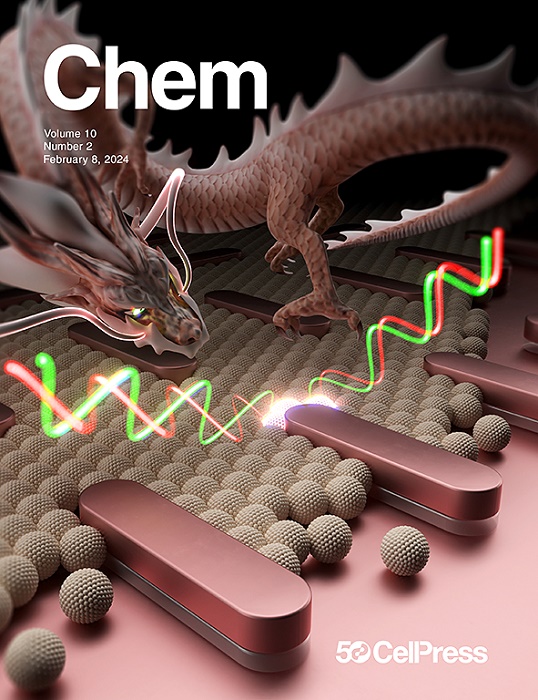通过主客体相互作用设计光和化学反应蛋白组装
IF 19.6
1区 化学
Q1 CHEMISTRY, MULTIDISCIPLINARY
引用次数: 0
摘要
主客体相互作用由于其固有的动态性、相互作用特异性和对多种刺激的响应性,已被广泛用于构建响应性材料和分子机器。在这里,我们已经开始利用HG化学在动态蛋白质组件设计中的这些优势,使用C4对称蛋白C98RhuA作为构建块。我们发现,用β-环糊精(βCD)(宿主)或偶氮苯(客体)功能单独修饰的C98RhuA变体可以特异性地相互配对,形成高度有序的1D和2D组装体。通过紫外和可见光以及β cd -偶氮苯相互作用的小分子调节剂可以控制βCDRhuA-azoRhuA组合的结合和解离。动力学分析表明,βCDRhuA-azoRhuA纳米管在没有成核屏障的情况下组装,这在螺旋超分子体系中是非常罕见的。综上所述,我们的发现为通过简单的化学设计实现蛋白质组装的复杂结构和动态结果提供了一个令人信服的例子。本文章由计算机程序翻译,如有差异,请以英文原文为准。


Design of light- and chemically responsive protein assemblies through host-guest interactions
Host-guest (HG) interactions have been widely used to build responsive materials and molecular machines owing to their inherently dynamic nature, interaction specificity, and responsiveness to diverse stimuli. Here, we have set out to exploit these advantages of HG chemistry in the design of dynamic protein assemblies, using a C4 symmetric protein, C98RhuA, as a building block. We show that a C98RhuA variant individually modified with β-cyclodextrin (βCD) (host) or azobenzene (guest) functionalities can specifically pair with each other to form highly ordered 1D and 2D assemblies. Association and dissociation of βCDRhuA-azoRhuA assemblies can be controlled by UV and visible light as well as by small-molecule modulators of βCD-azobenzene interactions. Kinetics analyses reveal that βCDRhuA-azoRhuA nanotubes assemble without a nucleation barrier, a highly unusual occurrence for helical supramolecular systems. Taken together, our findings provide a compelling example for achieving complex structural and dynamic outcomes in protein assembly through simple chemical design.
求助全文
通过发布文献求助,成功后即可免费获取论文全文。
去求助
来源期刊

Chem
Environmental Science-Environmental Chemistry
CiteScore
32.40
自引率
1.30%
发文量
281
期刊介绍:
Chem, affiliated with Cell as its sister journal, serves as a platform for groundbreaking research and illustrates how fundamental inquiries in chemistry and its related fields can contribute to addressing future global challenges. It was established in 2016, and is currently edited by Robert Eagling.
 求助内容:
求助内容: 应助结果提醒方式:
应助结果提醒方式:


